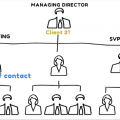If you started the new year on a quest to scale up your freelance business, then you’re probably on a business development kick as you read this.
Until you can reach the point when all the work you might ever need starts coming to you or through your referral network (disclosure: I’m not there yet, but neither are most freelancers that I know), then business development / sales prospecting is an activity that is going to have to become part of your daily routine.
Like brushing your teeth (hopefully!)

In fact, many freelancer tomes — including The Free
In fact, many freelancer tomes — including The Freelance Content Marketing Writer, which I highly recommend — advocate engaging in a constant train of low-effort prospecting even when your book of business is bursting at the seams with as much work as you have capacity for.
Why?
Anybody who has been freelancing for any length of time is aware of the dangers of feast and famine cycles: months that are overflowing with work followed by months that don’t have enough of it.
The key to avoiding this all-too-common freelancing reality is to have a sales pipeline that is constantly trickling down new leads.
Yes, time management can become a problem the busier you come.
But would you rather that or not having enough work to pay your bills?
How To Size Up Prospects
To help make the process of finding the right fits on the outbound side a little smoother, I’ve developed some tips and tricks over the years for evaluating clients that I am thinking about working with.
For this due diligence methodology to work, it doesn’t mater one iota whether this client reached out to you first (although that’s usually preferable) or whether they’re in your pipeline because of your outbound activity.
Either way — it’s worth investing five minutes of your time before embarking upon a relationship that mightn’t satisfy the needs of either party.
I call this the ‘Know Your Freelance Client’ (KYFC) methodology — and here are a few basic first steps:
1: What’s Their Funding Status?

If you’re looking at working with startups, then their funding history is among the most relevant considerations for you to evaluate.
(Of course, I’m taking a few things as givens here: that this is a company that you are interested in working with and that you have the necessary experience to actually work with them.)
Using Crunchbase (and I strongly recommend signing up for a Pro account — one good job should land you in positive ROI!), let’s look for a couple of clients that probably mightn’t be a good fit. (As for those that would: many freelancers advocate focusing on startups post-Series B raise only).
The Crunchbase search I screenshotted above, looking for companies that have closed no funding rounds and which have less than ten employees, actually only returned four results in the whole of the US.
So let’s instead change the ‘Funding Status’ variable to ‘Seed’ and see what we come up with:

This search (at the time of writing) returns roughly 9,000 results across the USA:

Because I think it would be a little tacky and demeaning to point to a real company from these results and say “see, this company is probably not in a position to hire freelancers”, I’ll redact the screenshots for anonymity.
Take this recently founded startup which promises to “take the pain out of customer reviews.” It only listed on Crunchbase last month — so it’s just about as new as can be.
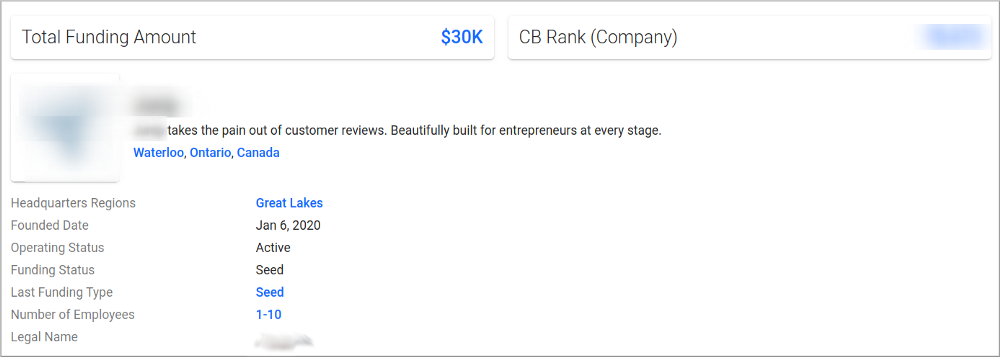
Crunchbase lists its total funding as $30,000.
The website’s homepage is below, with very little in the way of marketing material. Also note: there’s a registration link for signups but no sign of a blog yet:
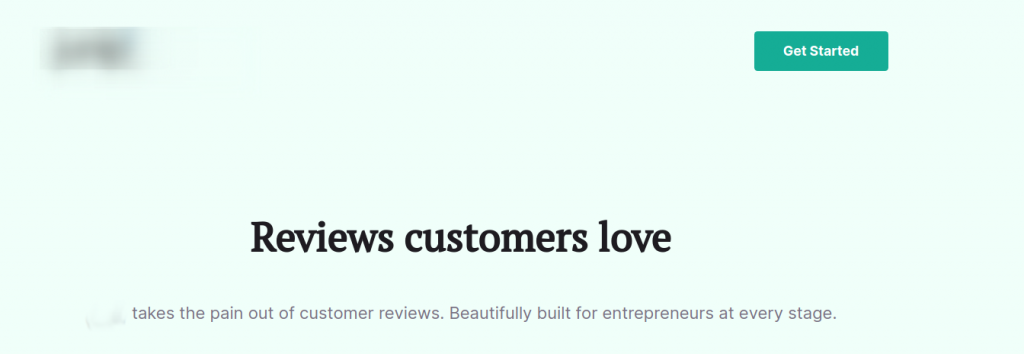
But don’t stop there.
We can click into the round (click ‘Seed’) and call up details about it.
Which will lead us to this press release:

I’m not telling you never to work with small seed-funded or bootstrapped startups (they could be highly profitable — which is why it also pays to search for accounts!).
If you know they’re looking for somebody who does what you do, and are prepared to put resources behind the effort — by all means reach out.
What I am saying is that, by doing so, you’re greatly stacking the odds against you that these companies are going to have a viable budget at their disposal to pay you with.
I suggest putting yourself in the shoes of one of these prospects. I would imagine that a company that has just picked up $30,000 in seed funding is going to prioritize all of the following above paying for content marketing — or whatever form of writing you provide:
- Paying developers to build an MVP if one doesn’t exist yet — or the actual product itself if it does
- Paying for office space
- Paying for heating and lighting
When trying to gauge the company’s overall state of business, consider looking at:
- Crunchbase profiles (for startups and privately listed companies)
- News/press releases announcing revenue figures and funding rounds
- Publicly viewable accounts. I think this level of sleuthing is beyond overkill, but I’m just putting it out there as a possibility. There are many websites such as AnnualReports.co.uk that allow you to purchase annual tax filings.
If things are getting really serious, you might also want to ask:
- Who are the investors? Is it a Venture Capitalist (VC) fund or has the startup just picked up some local government funding to keep the lights on for a few months?
- Who are the founders and what is their background?
All of this information should be available through LinkedIn and/or Crunchbase.
2: How Long Do People Stay At The Organization?
If you’re looking at taking on a client for the long term — and I suggest that you think of your potential relationships in those terms rather than looking for short ‘gigs’— then you might also want to evaluate whether the company seems to have a retention problem.
Again, I’m focusing on red flags — but sometimes you need to get passed those in order to start focusing on the green ones.
Investigating a company’s retention rate might seem far removed from the work you might expect a freelancer to do, but it really isn’t.
If there’s a revolving door in the marketing department, for example, you might lose the contract as soon as your point of contact jumps ship.
Getting an ‘in’ with his or her replacement isn’t necessarily easy, particularly if there hasn’t been a proper handover. I speak from experience here — and (again from my experience) the startup sector seems to be particularly volatile.
Using Crunchbase again, I dug up a random company in the 51–100 employees bracket. This should be big enough to observe trends.
The first one I hit on was Beyond Meat — a company based in California that describes itself as ‘The Future of Protein’ and which specializes in producing 100% plant-based product.

I’ve gotten really into veggie burgers recently and, in general, try to only eat meat on the weekends. So this seemed like a fun company to do a “deep dive” into as I’m on-board with their cause.
My first port of call would be their LinkedIn page.
BeyondMeat list themselves as having 293 employees currently:

My typical approach here would be to:
- See how many employees list BeyondMeat as their current employer.
- See how many employees list BeyondMeat as their previous employer.
- Calculate the ratio and look for a massive disparity between the two.
And I would do this by playing around with the LinkedIn filters like this:
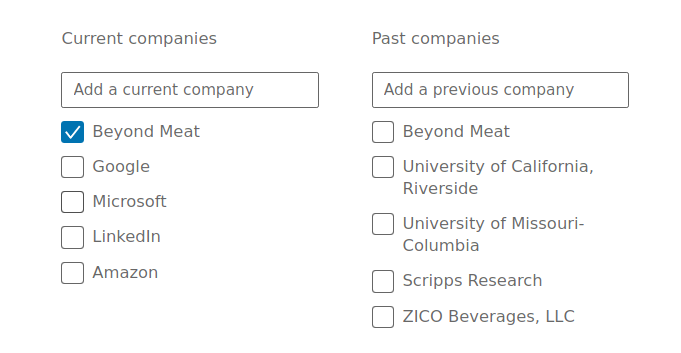
And like this:
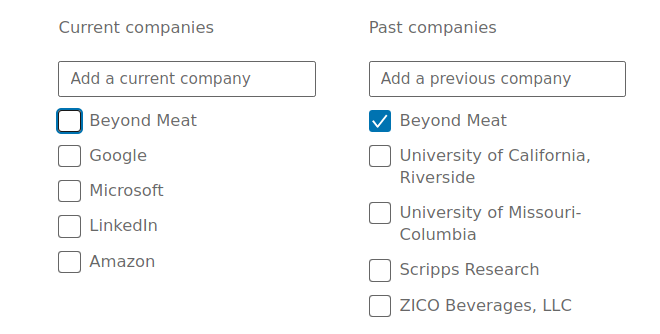
Doing so reveals that there are 168 past employees listed on LinkedIn:

This gives a current:past employee ration of 1.744.
I propose that in today’s work environment, with employees jumping ship every few years, that anything above 1.5, or at least 1, really isn’t bad. But then again, I’m not a HR specialist.
I would also take a look at how long their marketing leadership has been in their jobs — and whether there’s evidence that the company seems to favor internal or external recruitment. Sometimes the latter can erode morale within a department.
Their Senior VP of Marketing is just settling into his new job:

But, slightly down the food chain, their Director of Marketing has been in her job for close on three years:
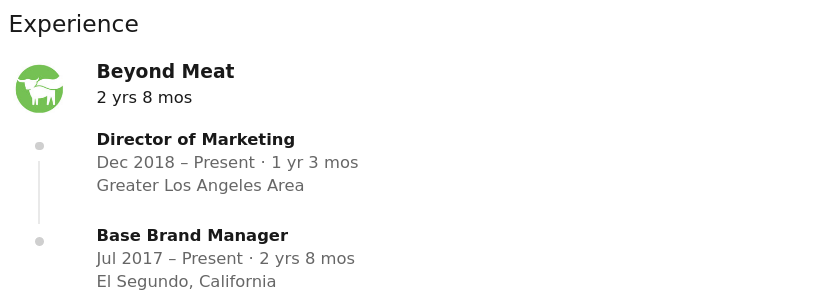
When looking at past employees (again, focusing on marketing, because that’s the department I most commonly work with), I would assess whether there is a pattern of people joining the marketing team, staying for under a year, and then jumping ship. That trend, if I saw it, would concern me.
Don’t forget that you can use Google too to aid your due diligence if you find running filters and jumping around LinkedIn itself a little confusing.
To do that, run a search for the company’s name, the job title you are interested in, and add inurl:linkedin.com/in to capture LinkedIn profiles only:

Remember that LinkedIn will capture interns as “employees” so it’s important to disregard those when you are evaluating for retention in a department:

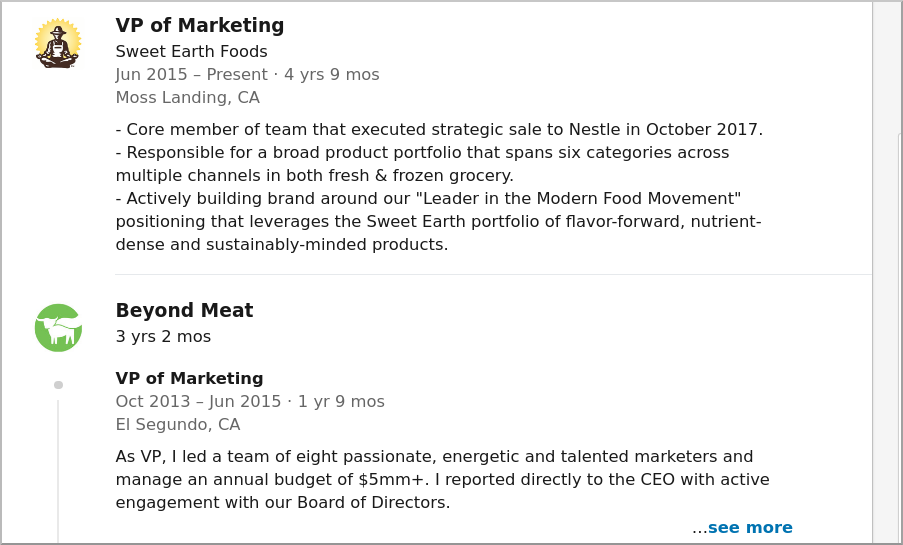
I found a couple of profiles from early-stage marketing hires that left the company to move on to other marketing gigs. But nothing that screamed “revolving door.”
So we can move on.
3: What Do People Say About the Company on Glassdoor?
If you’re not familiar with GlassDoor.com then you should make its acquaintance and go over and set up an account for yourself.
Glassdoor is a platform that lets former employees, contractors and freelancers leave anonymous “reviews” about working conditions at a company.
Among freelancers, this tool is grossly underused — which I think is a great pity because I believe that candidly sharing our experiences can be enormously valuable and because the platform expressly supports it.
There are a few things to be wary of here:
- (Unscrupulous) HR departments have been known to encourage their employees to write falsely positive reviews.
- (Unscrupulous) HR departments have been known to write (outright) fake positive reviews.
If I may say so myself, I’ve become pretty good at spotting these from the real deal. And sometimes, you’ll see whistleblowing reviews which flag the fact that HR is engaging in either of the above activity.
Whether the reviews are overall positive or overall negative the main things to watch out for when reading a company’s Glassdoor are:
- The overall rating: Like Amazon reviews, a combination of volume and average is very indicative of the overall working environment in my experience.
- Consistent narratives: do most employees highlight for praise, or criticism, roughly the same things? (But not exactly the same things: if everybody is in ‘awe’ of the office unlimited PTO or ping pong table these reviews may have been ‘seeded’).
- Chronology: when are the things being said? Toxic workplaces can be reformed. New hires can sour entire departments. You have to consider when all these things are occurring.
More presciently, as a freelancer, be on your lookout for reviews from freelancers that indicate that they have had difficulties getting paid. This is a situation I would avoid at all costs.
Also look out for companies that seem to be relying, predominantly, on contractors from cheap labor-bases (LinkedIn can be used for this purpose too). You can spot this by where the posters are based.
Here’s a real Glassdoor page illustrating exactly the type of thing that would throw up an immediate red flag for me.
(Also note: this is a company ostensibly based in the US and they are using a freelancer based in Bangalore, India — which would be another red flag if you charge US rates):
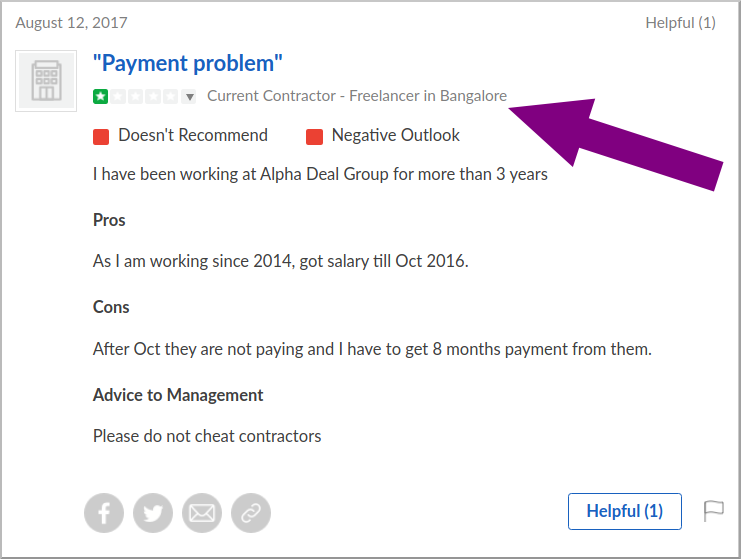

Five Minutes of Due Diligence Can Save A Lot of Heartache
The methodology I described above might seem like a lot of work — and it’s only scratching the surface of all the metrics and information you can evaluate when sizing up a prospective client.
For instance, I also like to run a Google News search and review their recent press releases — just to get a general feel for what they are up to.
If you want to go full-hog on the sleuthing (I’ve done this for potential employers, but not for clients) you can even initiate contact with former employees on LinkedIn, who fulfilled a similar role, and ask them for five minutes of their time to share their experience candidly.
This can be an invaluable means of getting past HR spin and cutting to the core of exactly what the work environment is likely to be like. In my experience, most former employees are happy to speak off-the-record in this manner —including those without an axe to grind.
Remember: I have developed all of the above KYFC (Know Your Freelance Client) criteria for specific reasons.
To recap and conclude those are:
— Funding history and profitability are really important. Spending time on pre-seed startups that can’t afford your services might be a waste of time — if you want to focus on companies with a short to medium term need for your services.
— And so is the stability of the department you’ll be working with. It’s always frustrating when you loose a valuable freelancing account for reasons beyond your control — such as your account manager moving jobs. Be wary of freelancing for organizations that seem like revolving doors.
— Tap into the power of Glassdoor. Many more freelancers should be availing of the power of Glassdoor. I advise giving companies the benefit of the doubt. But if you read multiple reports from contractors saying they can’t get paid — personally, I wouldn’t take on the account.
Best of luck finding your best-fit clients this year!

